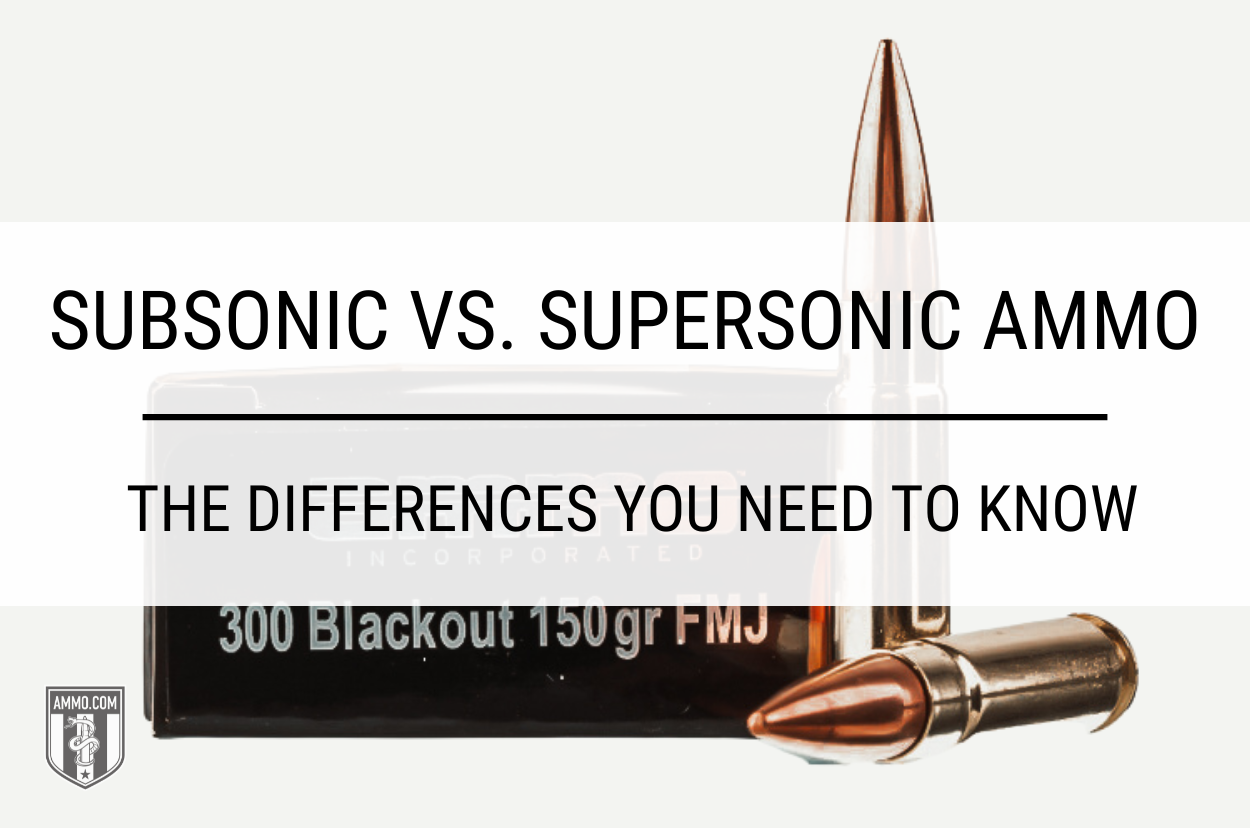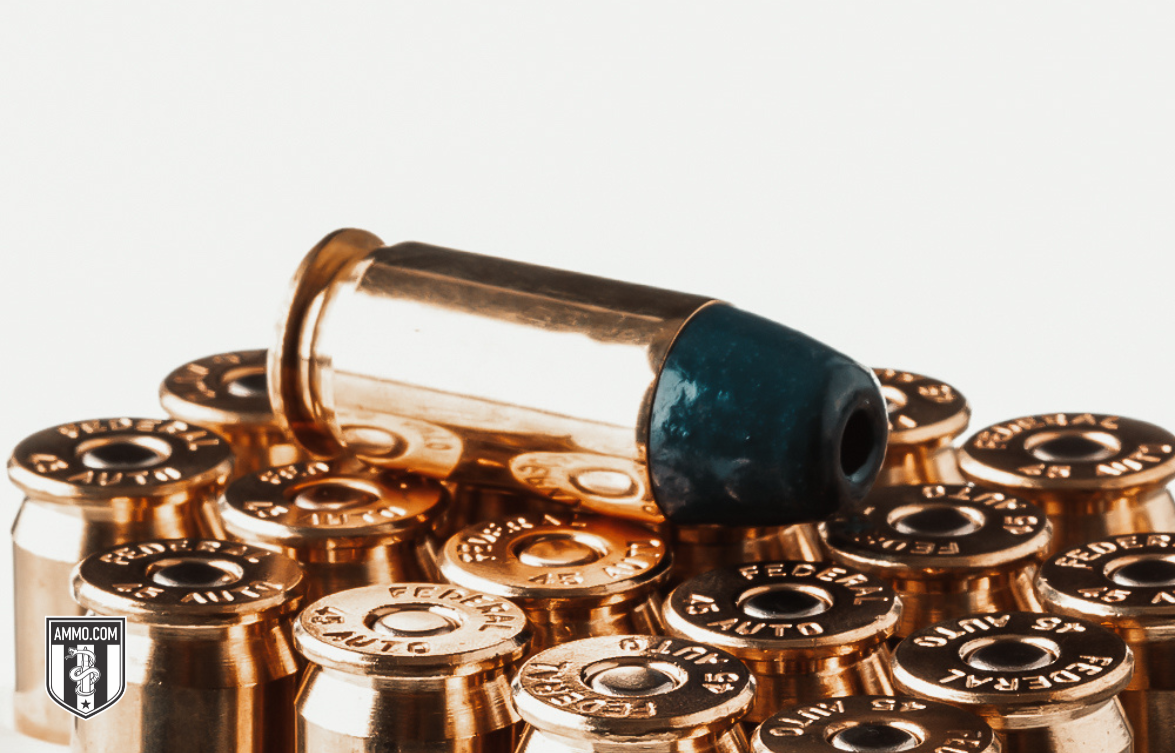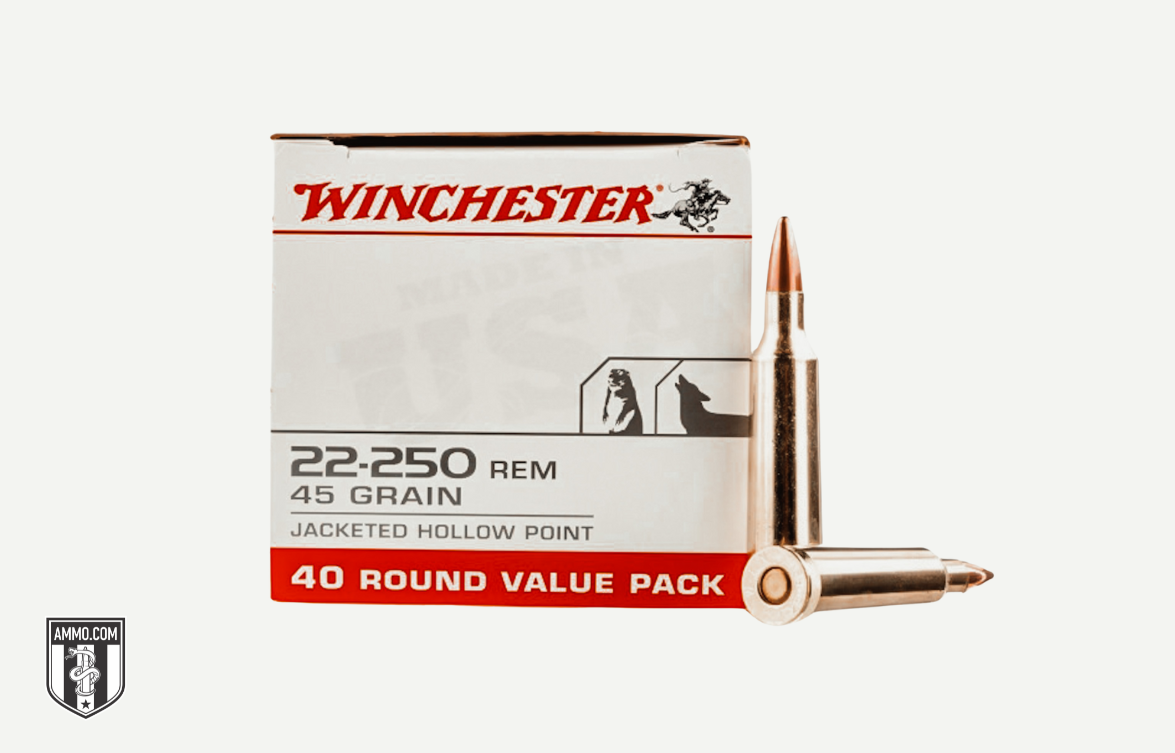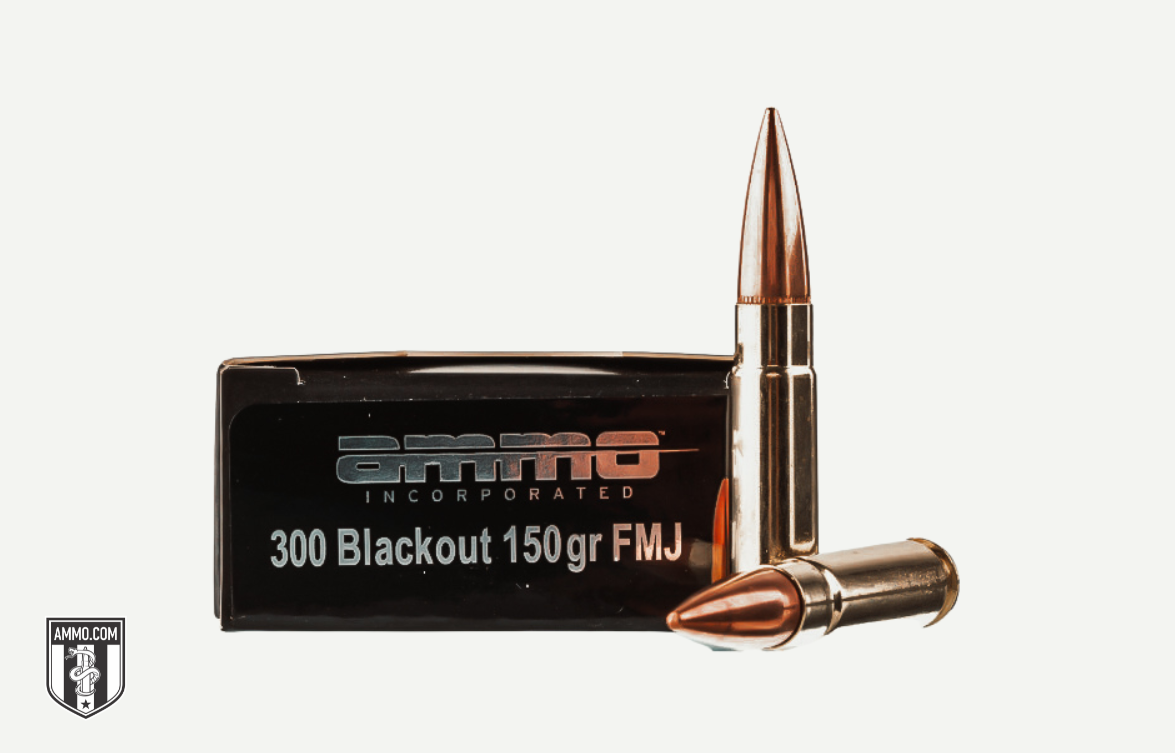Subsonic vs. Supersonic Ammo: The Differences You Need To Know

So you just saw a box of ammo labeled “subsonic” and another one labeled “supersonic” – both claiming to be for the same firearm.
What do those words mean with regard to ammo? What makes one different from the other? You must understand these things before you can make the most effective use of your firearm.
Fortunately, it’s not all that complicated. Today, we’re discussing subsonic vs. supersonic ammo: their differences, their relative pros and cons, and which one is better for your needs. By the end of this article, you’ll know which type of ammo you should choose.
Let’s get after it.
Understanding the Speed of Sound and Its Effect on Ammunition
To understand the difference between subsonic and supersonic ammo, you must understand (A) the speed of sound and (B) how bullets are affected by it.
The speed at which sound waves travel depends on a few atmospheric variables (elevation, temperature, barometric pressure, humidity, etc.). For simplicity’s sake, it’s standard to assume the speed of sound equals 1,125 feet per second (ft/s; or 767 mph) at 68 °F. When an object exceeds the speed of sound (i.e., becomes supersonic), it breaks the sound barrier and issues a sharp cracking noise (sonic boom) as a result.
Ever been to an air show with fighter jets? Remember the awesome “ker-POW” as their engines fired off? Those were sonic booms.
What Is Supersonic Ammo?
Most modern ammo designs are supersonic by nature: i.e., loaded with bullets that exit the barrel at a velocity higher than 1,125 ft/s. Ignition of a supersonic cartridge is always accompanied by a distinctive “CRACK” – a literal sonic boom.
Supersonic bullets aren’t necessarily more powerful than subsonic alternatives (bullet weight also plays a significant role in striking energy), though they do tend to follow flatter trajectories to their targets. That facilitates aiming, as it allows the shooter to make less compensation for bullet drop (which becomes less pronounced when the bullet takes a relatively shorter amount of time to traverse a given distance).
What Is Subsonic Ammo?
Subsonic ammunition is designed to fire its projectiles at a velocity below the speed of sound (1,125 ft/s). It is typically loaded with heavier bullets than its supersonic counterparts (e.g., 300 BLK, which is supersonic at 150 grains and subsonic at 190).
Subsonic ammo’s performance is quieter than that of supersonic alternatives. It is unable to break the sound barrier, and therefore avoids producing a sonic boom on ignition.
I’ve always found subsonic ammo to have a softer report, generate less recoil, and deliver better long-distance accuracy. That third facet of performance is due to a quirk of physics. When a bullet’s velocity transitions from supersonic to subsonic, it undergoes what is known as “transonic destabilization.” This phenomenon causes the bullet to wander off of its intended trajectory — and is totally averted by a bullet that never becomes supersonic in the first place.
Subsonic vs. Supersonic Ammo
There are instances when subsonic ammo is better than supersonic ammo and vice versa. One is not inherently better than the other. To appreciate why, consider either type of cartridge’s potential benefits.
Subsonic Ammo Pros
- Reduced sound signature
- Optimal for suppressed shooting
- Improved long-range accuracy (bullet avoids picking up a wobble as a result of transonic destabilization)
- Noticeably lower recoil (if a cartridge is a subsonic variant of a normally supersonic type of ammunition, such as 30-30 Win)
- It won’t impact a shooter’s hearing as severely if fired in defense
Supersonic Ammo Pros
- Longer effective range
- Flatter trajectory (facilitates aiming by requiring less compensation for gravity; benefit is inconsequential at close range)
- Potentially higher striking energy and wounding potential
Either type of ammo also has its downsides, which can determine whether it is the worse choice for a given scenario.
Subsonic Ammo Cons
- May not reliably cycle certain semi-automatic firearms (22 LR being the prime example)
- Shorter effective range
- Potentially less powerful (although many rounds are subsonic by design, such as 45 ACP, a subsonic variant of a normally supersonic cartridge, such as 308 Win, will necessarily hit its target softer)
- Bullet exhibits more drop than a supersonic one at the same distance, which can make long-range shooting more challenging
Supersonic Ammo Cons
- Transonic destabilization causes the bullet to begin wobbling when its velocity slows to subsonic (which can take place at 50 yards or well past 1,000, depending on the cartridge type)
- Louder report (even with a suppressor)
- Potential for heavier recoil
Is Subsonic Ammo Weak?

Not necessarily. As mentioned earlier, several types of ammunition are subsonic by design. One wouldn’t call the 45 ACP, 45 Colt, or 190+ grain 300 BLK “weak” by any standard. They are all powerful enough to achieve their intended purposes. Subsonic variants of ammo that’s normally either sub- or supersonic aren’t necessarily weak, either. The 9mm is one example of a cartridge that’s commonly available in both subsonic and supersonic configurations. Its 115 grain bullets are supersonic, whereas its 147 grain projectiles are subsonic (+P ammo notwithstanding). Despite these differences, the two variants are approximately as powerful as one another.
You could objectively label subsonic ammo “anemic” if it’s significantly weaker than a supersonic alternative. This is common with cartridges that are usually supersonic by design. For example, Hornady Subsonic 30-30 has a power factor of 183.75 – less than half that of Hornady LEVERevolution.
Note that subsonic bullets are usually heavy (relative to whichever other bullets a cartridge is normally loaded with, at least). This bears on their terminal performance. Just as Newton's First Law of Motion holds that "an object in motion stays in motion,” so too does a heavier bullet tend to conserve relatively more striking energy downrange. Its higher momentum may also enable a heavyweight bullet to penetrate flesh more effectively.
Why Subsonic Ammo Pairs Well With Suppressors
Subsonic ammo is recommended (but not mandatory) for suppressors. A suppressor successfully muffles a supersonic cartridge’s report to some degree, although it cannot soften the sharp “crack” produced by a bullet breaking the sound barrier. By eliminating the supersonic crack altogether, subsonic ammo enables a suppressor to exhibit its fullest effect.
Now, I’m not the kind of guy who expects John Wick movies to be realistic. With that said, if two guys engaged in a suppressed gunfight at a crowded train station, bystanders would most certainly take note. Subsonic ammo isn’t “movie silent” when paired with a suppressor. No ammo is.
Examples of Supersonic Ammo
I’ve compiled a list providing examples of conventionally supersonic cartridges. Most modern ammo is supersonic, so this list could be much longer.
Supersonic Rifle Cartridges
Supersonic Handgun Cartridges
Examples of Subsonic Ammo
Subsonic Rifle Cartridges
- 300 BLK (190+ grains)
- 300 Whisper
- 338 Whisper
Subsonic Handgun Cartridges
Parting Shots: Subsonic vs. Supersonic Ammo
Now that you know the differences regarding subsonic vs. supersonic ammo, you’re better prepared to buy the right type of ammo.
For average hunters and target shooters, supersonic ammo should be the go-to option.
For suppressed shooting or those desiring a softer report (like during a home defense situation), subsonic ammo will perform better.
Whichever you decide to use, be sure to stock up at Ammo.com. We offer excellent prices, friendly customer service, and fast (but not quite supersonic) shipping!
Ammo Comparisons
- .308 vs 5.56
- 6.5 Creedmoor vs .308
- .300 Blackout vs .308
- .300 Win Mag vs .308
- .243 vs .308
- .308 vs .30-06
- 7mm-08 vs .308
- .270 vs .308
- 7.62x39 vs .308
- .223 vs .308
- .338 Lapua vs .308
- .380 ACP vs 9mm
- .223 vs 5.56
- .300 Blackout vs 5.56
- 9mm vs 45 ACP
- 9mm vs 40 S&W
- .357 SIG vs 9mm
- 10mm vs 9mm
- 9mm vs 9mm Luger
- .243 vs .270
- .300 Win Mag vs .30-06
- .270 vs .30-06
- .40 vs .45
- 38 Special vs 357
- 9mm vs 40 vs 45
- 5.56 vs 7.62x39
- 338 Lapua vs .30-06
- .30-30 vs .30-06
- 300 PRC vs 338 Lapua
- .30-06 vs 7mm
- 300 Win Mag vs 338 Lapua
- 300 PRC vs 300 Win Mag
- 300 WSM vs 300 Win Mag
- 338 Win Mag vs 338 Lapua
- 12 Gauge vs 20 Gauge
- 10mm vs 357 Mag
- .30-30 vs 7.62x39
- 224 Valkyrie vs 22-250
- 17 HMR vs 22 Mag
- 7.62x39 vs .300 Blackout
- 45 ACP vs 45 Auto
- 45-70 vs 30-30
- 300 Blackout vs 223
- 357 Magnum vs 9mm
- 350 Legend vs 300 Blackout
- 224 Valkyrie vs 223
- 45 ACP vs 38 Super
- 6.5 Grendel vs .308
- 17 HMR vs 22 LR
- 10 Gauge vs 12 Gauge
- 22-250 vs 223
- 45 Colt vs 45 ACP
- 350 Legend vs 30-30
- 5.7x28 vs 223
- 5.7 vs 9mm
- 5.56 vs 5.7
- 22 vs 9mm
- Buckshot vs Birdshot
- 450 Bushmaster vs 308
- 450 Bushmaster vs 223
- Buckshot vs Slug
- 6.5 Grendel vs 5.56 vs 223
- 6mm ARC vs 6.5 Grendel
- 44 vs 45
- 458 SOCOM vs 5.56
- 357 vs 44
- 32 ACP vs 380
- 300 Win Mag vs 338 Win Mag vs 338 Lapua Mag
- 450 Bushmaster vs 458 SOCOM vs 50 Beowulf
- 6mm Creedmoor vs 6.5 Creedmoor
- TMJ vs FMJ
- 44 Special Vs 44 Magnum
- 45 90 vs 45 70
- 6.8 Western vs 6.8 SPC
- 50 Beowulf vs 50 BMG
- 26 Nosler vs 6.5 PRC
- 28 Gauge vs 410
- 6.8 SPC vs 5.56
- 6.8 SPC vs 6.5 Grendel
- 6.8 Western vs 7mm Rem Mag vs .28 Nosler
- 6.8 Western vs 6.5 Creedmoor
- 22 Hornet vs 223
- 6.8 Western vs 6.5 PRC
- .410 vs 12 Gauge
- .410 vs 20 Gauge
- 22 LR vs 22 Mag
- 6mm ARC vs 243
- 7mm-08 vs 270
- 243 vs 6.5 Creedmoor
- Nickel vs Brass Casing
- 204 Ruger vs 223
- 50 Beowulf vs 5.56
- 260 Remington vs 6.5 Creedmoor
- 6mm Remington vs 243
- 28 Nosler vs 300 PRC
- 50 Beowulf vs 50 AE
- 22 Nosler vs 22-250
- 450 Marlin vs 45-70
- 300 Win Mag vs 300 Norma
- 458 SOCOM vs 300 Blackout
- 38-55 vs 45-70
- 22 Hornet vs 22 LR
- 300 Norma vs 338 Lapua
- 338 Lapua vs 50 BMG
- 28 Nosler vs 300 Win Mag
- 28 Nosler vs 6.5 Creedmoor
- 204 vs 22-250
- 458 SOCOM vs 45 70
- 44 40 vs 45 70
- 6.8 SPC vs 6.5 Creedmoor
- 450 Bushmaster vs 30-06
- 7mm Rem Mag vs 300 Win Mag
- 30 Carbine vs 223
- 25-06 vs 30-06
- 26 Nosler vs 28 Nosler
- 16ga vs 12ga
- 30 06 vs 7.62 x54R
- 9mm Makarov vs 9mm Luger
- 350 Legend vs 223
- 30 Carbine vs 5.56
- 6.5x55 vs 6.5 Creedmoor
- 6.5 Creedmoor vs 270 vs 25-06
- M193 vs M855
- 450 Bushmaster vs 458 SOCOM
- 6.5 Grendel vs 6.5 Creedmoor
- 350 Legend vs 5.56
- .277 Fury vs 6.8 SPC
- 277 Fury vs 300 Win Mag
- 10mm vs .45 ACP
- 277 Fury vs 223
- 6.8 SPC vs 300 Blackout
- 6.5 PRC vs 6.5 Creedmoor
- 277 Fury vs 308
- 277 Fury vs 6.5 Creedmoor
- 350 Legend vs 450 Bushmaster
- 277 Fury Vs 5.56 NATO
- 10mm vs 40S&W
- 32 ACP vs 9mm
- 32 Special vs 9mm
- 8.6 Blackout vs 300 Blackout
- 30 Super Carry vs. 9mm
- 5.56 vs 9mm
- .50 Action Express vs 9mm
- 7.62x25 vs. 9mm
- 10mm vs 44 Magnum
- 300 Blackout vs 300 Win Mag
- 6.5 Grendel vs 300 Blackout
- 460 Rowland vs 10mm
- 300 RUM vs 300 PRC
- 300 Norma vs 300 PRC
- 45 GAP vs 45 ACP
- 7mm PRC vs 300 Win Mag
- 300 PRC vs 6.5 Creedmoor
- 300 PRC vs 308
- 357 SIG vs 357 Mag
- 7.62x39 vs 7.62x51
- 243 Win vs 223 Rem
- 30 Nosler vs 300 PRC
- 6.5 Creedmoor vs. 30-06 Springfield
- 450 S&W vs. 44 Magnum
- 6.5 Creedmoor vs. 300 Win Mag
- 454 Cassull vs. 45-70 Govt
- 454 Cassull vs. 44 Mag
- 7.62x54r vs. 308 Winchester
- 22 ARC vs. 223 Rem
- Subsonic vs. Supersonic Ammo


